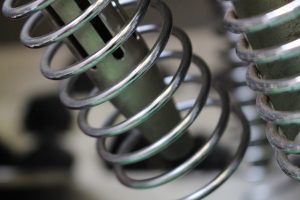
When researching the different types of springs, you may come across machined springs. They are available in extension and compression styles. Extension styles are designed to “extend” under a load, meaning they become longer. Compression styles, on the other hand, are designed to “compress” under a load, resulting in a shorter length.
Overview of Machined Springs
Machined springs are energy-storing mechanical devices that are manufactured via machining. This results in a high level of precision. Machined springs can be designed in specific sizes and dimensions with narrow tolerances.
How Machined Springs Are Made
All machined springs are made via a manufacturing process. That’s why they are they are known as “machined springs.” But that are different types of manufacturing processes used to create them.
Most machine springs are manufactured using Computer Numerical Control (CNC) machining. CNC machining involves the use of a machine, such as a lathe or milling machine, in conjunction with a computer program. Manufacturing companies can specify the physical attributes of the spring in the computer program. The computer program will relay this information to the lathe or milling machine, which will then produce the machined spring.
Benefits of Machined Springs
Machined springs are designed to store mechanical energy — just like all springs. When exposed to a load, they will become longer or shorter, depending on the style. As the machined spring extends or compresses, it will store mechanical energy while simultaneously exerting its own counterforce. Machined springs, however, offer several benefits that make them stand out from conventional springs.
Machined springs are more precise than conventional springs. Because they are made using CNC machining, machined springs support tight tolerances. For some applications, conventional springs will suffice. For other applications, only springs in specific sizes and dimensions will work, making machined springs the ideal choice.
Some of the most common applications for machined springs include the following:
- Surgical equipment
- Satellite systems
- Aircraft landing gear
- Medical diagnostics systems
- Engine components
- Automotive suspension systems
Another benefit of machined springs is customization. They support a high level of customization. Manufacturing companies can customize machined springs so that they meet the needs of the businesses and customers who use them.
In Conclusion
Springs are often classified according to how they are made. Wire springs, for instance, are made by drawing wire stock to achieve a coiled shape, whereas machined springs are made via machining. Machined springs support narrow tolerances and a high level of customization.
